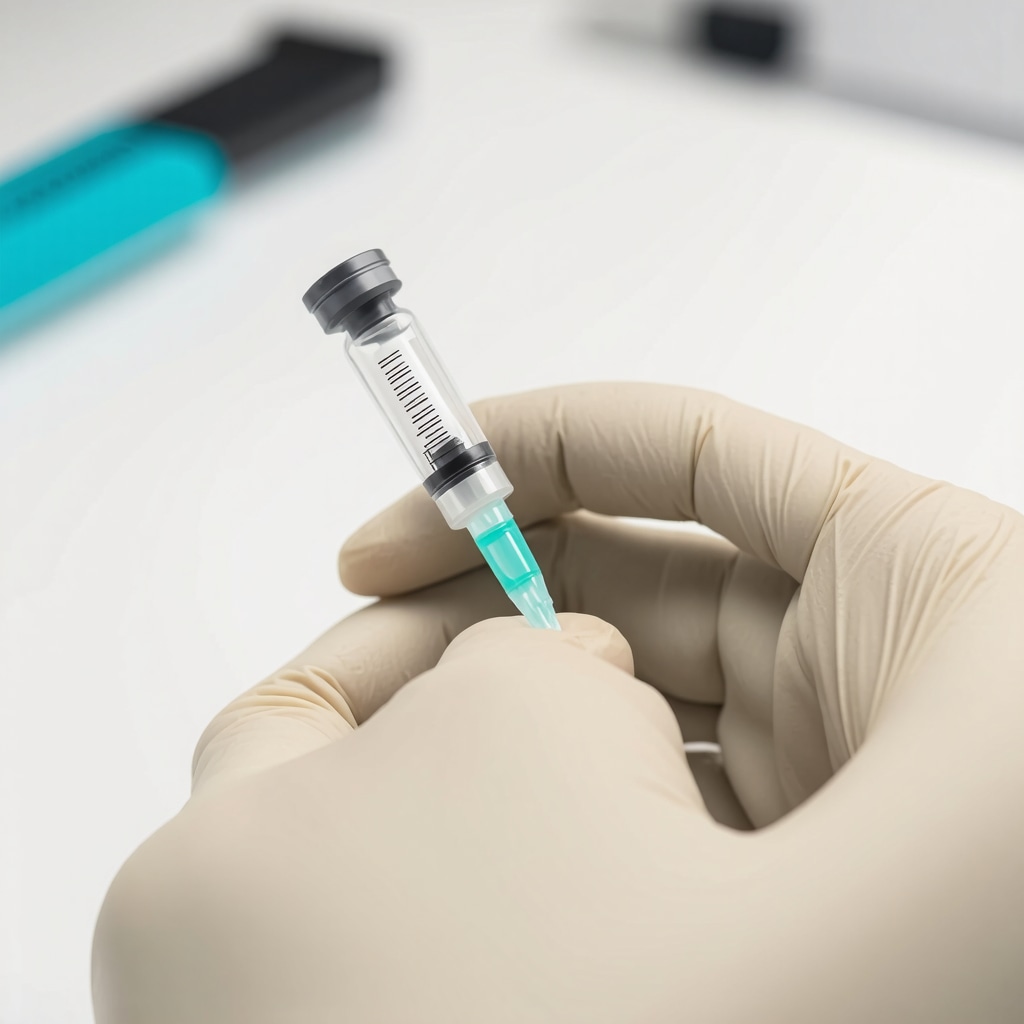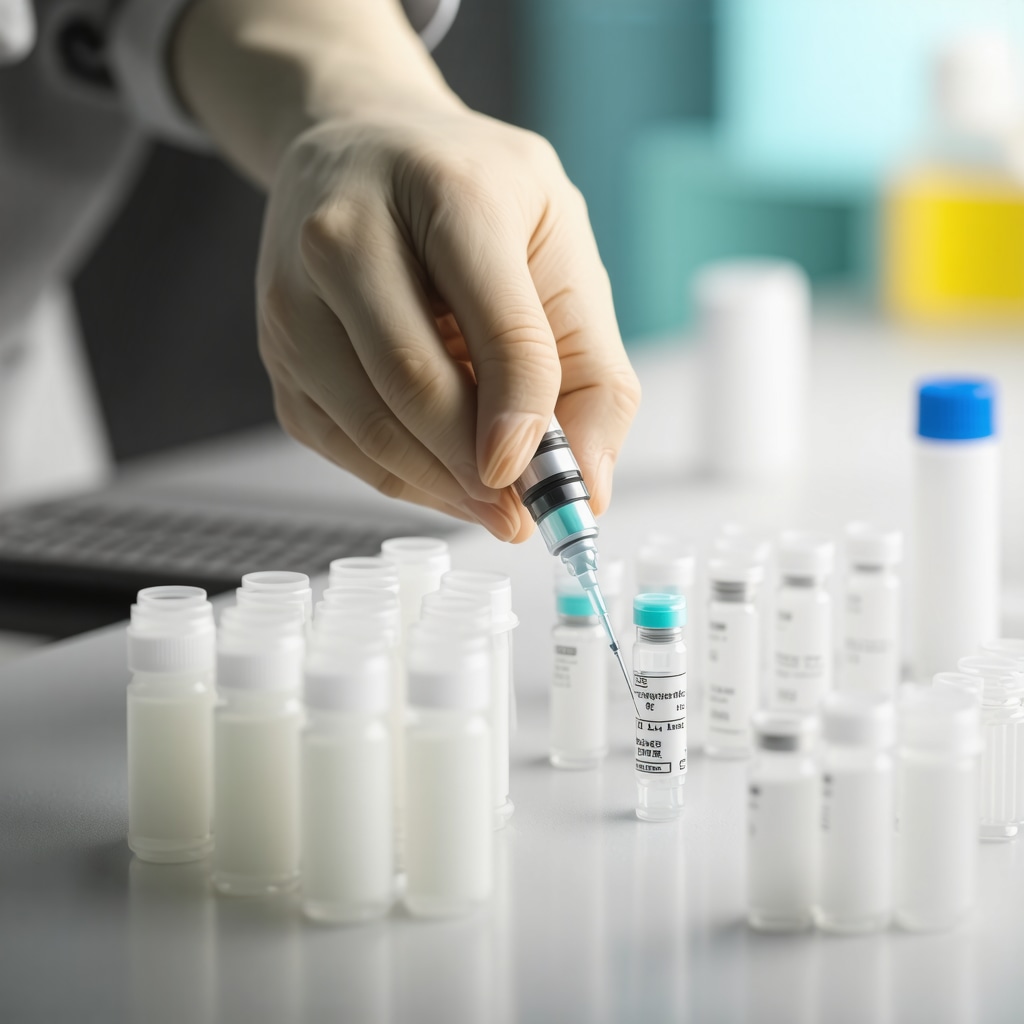Injectables on the Loose: Are You Treating Your Fat Loss Shots Like Fine Wine?
Picture this: you finally get your hands on that prescription injectable promised to torch fat and curb appetite. Exciting, right? But hold on—before you start tossing those vials into the fridge or, worse, leaving them on the bathroom counter, let’s talk about the art of proper handling and storage. Because in the world of injectables, a little neglect can turn your miracle cure into a potential mishap.
The Cold, Hard Truth About Storage: Is Your Fridge Doing Its Job?
First things first—your injectable fat loss treatments are delicate little creatures that thrive in the cool, dark sanctuary of your refrigerator. Think of them as high-maintenance pets; they need a cozy, stable environment to keep their efficacy intact. Most medications like semaglutide or tirzepatide should be stored at 2°C to 8°C (36°F to 46°F), away from direct sunlight and heat. Forgetting this simple rule can compromise the solution, rendering it less effective—or worse, unsafe.
Temperature Troubles: Why Hot & Cold Are Not Your Friends
Ever left your medication out on the counter on a hot day? Or perhaps you thought, “It’s just a few minutes,” and suddenly your treatment is exposed to temperature swings? These fluctuations can degrade the medication’s potency. Remember, consistency is key. Use a thermometer in your fridge to ensure the temperature stays within the recommended range and avoid freezing your injections unless specified by your healthcare provider.
Handling with Care: The Gentle Touch Matters
Injectables are sensitive, not just to temperature but also to physical jostling. Shaking the vial vigorously? That’s a big no-no—it can cause bubbles or affect the medication’s structure. Instead, gently roll or invert the vial to mix the solution. Always wash your hands thoroughly before handling to prevent contamination, and store your supplies in a clean, dedicated spot away from children and pets.
Is There a Right Way to Dispose of Unused or Expired Treatments?
Out with the old, in with the safe! Never toss unused or expired medications in the trash or flush them down the toilet. Follow your local guidelines or ask your pharmacist about proper disposal methods. This isn’t just about safety; it’s about respecting the environment and ensuring no one accidentally misuses outdated treatments.
Have you ever experienced storage mishaps with your injectables? What tips would you share with fellow readers?
If you’re curious about how to maximize your treatment’s effectiveness, don’t hesitate to reach out to your healthcare provider or check out expert advice on safe handling and storage. Remember, your journey to better health isn’t just about the medication itself but how well you care for it along the way.
For further insights into safe handling practices, see the comprehensive guide provided by the FDA’s official site on medication safety and storage.
Beyond Storage: How Your Handling Habits Impact Injectable Weight Loss Success
While storing your weight loss injectables correctly is essential, the way you handle these medications daily can significantly influence their effectiveness. Proper storage creates the foundation, but gentle handling, precise dosing, and consistent practices are the building blocks of a successful treatment journey. Are you giving your medication the respectful treatment it deserves to maximize your fat-burning potential?
Handling with Precision: The Small Details That Make a Big Difference
Injectables like semaglutide and tirzepatide are sensitive to physical agitation. Shaking or vigorous mixing can introduce bubbles or compromise the stability of the solution. Instead, gently invert or roll the vial to ensure thorough mixing without damaging the medication’s structure. This careful approach helps maintain consistency and avoids dosing issues, ensuring each injection delivers the correct amount of active ingredient.
Preventing Contamination: The Art of Hygiene and Safe Practices
Hands-off is the way to go. Always wash your hands thoroughly before handling your medication to prevent contamination. Use sterile alcohol wipes to clean the injection site and the vial’s rubber stopper. Keep your supplies in a dedicated, clean area away from pets, children, and potential sources of dirt. This hygiene-first approach reduces the risk of infections and ensures your treatment remains safe and effective.
Accurate Dosing: The Role of Proper Technique in Achieving Your Goals
Measuring doses accurately is crucial. Use the syringe or pen device as instructed by your healthcare provider. Don’t attempt to eyeball doses or alter the prescribed amount. Proper technique not only safeguards your safety but also ensures your body receives the intended therapeutic dose, helping you achieve weight loss results more reliably. For detailed guidance, check out expert tips on medication use.
Consistency is Key: Developing a Routine That Supports Success
Handling your medication consistently reinforces your treatment. Always store it at the right temperature, handle it with care, and inject at the same time each day if possible. Establishing a routine minimizes errors and helps your body adapt to the medication, paving the way for sustained weight loss and metabolic improvements.
What are the hidden handling mistakes that could be sabotaging your weight-loss injections?
Many users overlook the importance of gentle handling and proper technique, risking reduced efficacy or adverse effects. Small actions, like avoiding shaking or ensuring thorough cleaning, can make a big difference in treatment outcomes. Curious about how to fine-tune your injection routine? Consider consulting your healthcare provider or visiting trusted sources like doctor-backed tips for more insights.
If you’re serious about optimizing your injectable weight loss journey, sharing your tips or questions can help others succeed. Feel free to comment below or explore more at our contact page. Remember, achieving long-term health benefits is a team effort, and proper handling is a vital part of the equation.
Advanced Techniques for Maintaining the Efficacy of Your Fat Loss Injections
As the landscape of injectable weight loss treatments evolves, so does the importance of meticulous handling and storage practices—elements that are often overlooked yet crucial for maximizing results. Beyond basic storage, understanding the nuances of medication stability under various conditions can influence your overall success in achieving your health goals.
How Do Environmental Factors Impact Injectable Stability Beyond Temperature?
While temperature control is paramount, factors such as humidity, light exposure, and even static electricity can subtly degrade the potency of injectable medications. For instance, exposure to fluorescent lighting in your medicine cabinet might accelerate degradation of sensitive compounds like semaglutide. Research by pharmaceutical scientists, as detailed in the Journal of Pharmaceutical Sciences (2022), underscores the importance of maintaining a controlled environment that minimizes these external influences. Storing medications in opaque, airtight containers within a cool, dark place can be a game-changer, preserving their integrity over extended periods.
The Art of Gentle Handling: Preventing Microbubbles and Contamination
Did you know that even slight mishandling can compromise your medication’s efficacy? When preparing injections, gentle inversion—rather than vigorous shaking—is essential to avoid introducing microbubbles that could hinder absorption or cause injection site reactions. Furthermore, rigorous hand hygiene, coupled with sterile technique when accessing the vial or pen, is critical. Using alcohol swabs to sterilize the rubber stopper and the injection site reduces contamination risk, which is especially vital given the immunocompromised state associated with obesity or metabolic disorders.
Can Microbubbles Affect the Absorption of Your Injectable Treatment?
Absolutely. Microbubbles can interfere with proper absorption by creating uneven distribution of the medication within the subcutaneous tissue. This can lead to inconsistent dosing and suboptimal results. A study published in Clinical Pharmacology & Therapeutics (2021) highlights how microbubble formation correlates with incorrect handling practices, emphasizing the need for gentle mixing and proper technique to ensure uniformity. Paying attention to these small details can significantly enhance your treatment’s effectiveness.
Disposal and Environmental Responsibility: An Often Overlooked Aspect
Safe disposal of used needles and medication vials isn’t just about legality; it’s about environmental stewardship. Using sharps containers and following local disposal regulations prevents accidental injuries and environmental contamination. Some regions now offer medication take-back programs, which are the most eco-friendly method—further demonstrating that responsible handling extends beyond your body to the planet.
Empowering Your Journey: Continuous Education and Professional Consultation
To truly optimize your injectable weight loss regimen, staying informed is key. Regular consultations with healthcare providers, combined with ongoing education from reputable sources like the FDA’s official guidance on medication safety, can help you adapt your handling practices to new formulations or updated storage recommendations. Remember, an informed user is an empowered user—taking charge of your treatment’s nuances can make all the difference in your long-term success.
Interested in deepening your understanding? Engage with experts through online forums, webinars, or your healthcare provider to refine your techniques. Mastery over the handling and storage of your injectable treatments isn’t just a matter of convenience—it’s a strategic component of your health strategy, ensuring each injection delivers maximum benefits.

The Hidden Impact of Environmental Factors on Injectable Stability: Beyond Temperature Control
While maintaining the recommended temperature range is essential, other environmental elements can subtly degrade your medications. Factors such as humidity, exposure to light, and static electricity may influence the stability of GLP-1 receptor agonists like semaglutide and tirzepatide. High humidity levels can lead to hydrolysis, reducing drug efficacy, especially if stored in non-airtight containers. Light exposure, particularly ultraviolet rays, can break down the active molecules, diminishing their potency over time. Static electricity, common in dry environments, might even cause microbubbles or affect delicate solutions during handling. According to research published in the International Journal of Pharmaceutics (2022), storing medications in opaque, airtight containers within a cool, dark environment significantly prolongs their shelf life and maintains their efficacy. This approach ensures your treatment remains as potent as when first prescribed, maximizing your weight loss potential.
Expert Insights & Advanced Considerations
1. Precise Storage Conditions Are Non-Negotiable
Top-tier medical professionals emphasize that maintaining the correct refrigerator temperature, typically between 2°C and 8°C, is essential for preserving medication efficacy. Deviations can lead to degradation, reducing the treatment’s potency and risking safety.
2. Gentle Handling Prevents Microbubbles and Contamination
Handling injectables with care—avoiding vigorous shaking and practicing sterile techniques—ensures consistent dosing and minimizes adverse reactions. Microbubbles formed through rough handling can impair absorption and effectiveness.
3. Environmental Factors Beyond Temperature Matter
Humidity, light exposure, and static electricity can subtly impact drug stability. Using opaque, airtight containers and storing medications in dark, cool places prolongs shelf life and maintains potency, especially for sensitive compounds like semaglutide.
4. Proper Disposal Is an Environmental Responsibility
Disposing of used needles and vials in designated sharps containers and adhering to local disposal regulations protect both the environment and public health. Environmentally conscious practices are integral to responsible medication management.
5. Continuous Education and Professional Guidance Are Critical
Engaging regularly with healthcare providers and consulting authoritative sources like the FDA’s medication safety guidelines ensures handling practices evolve with new research, safeguarding long-term treatment success.

